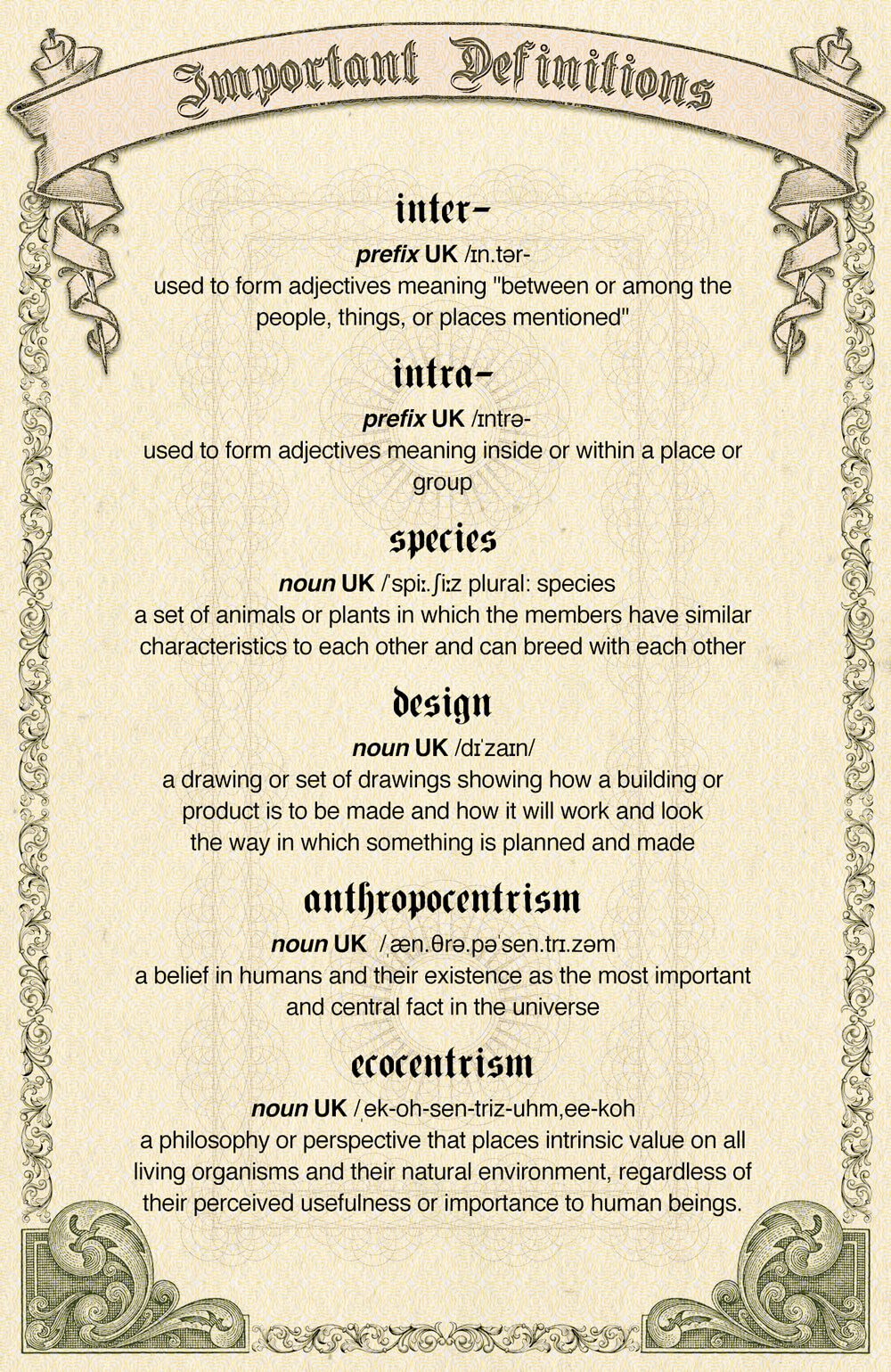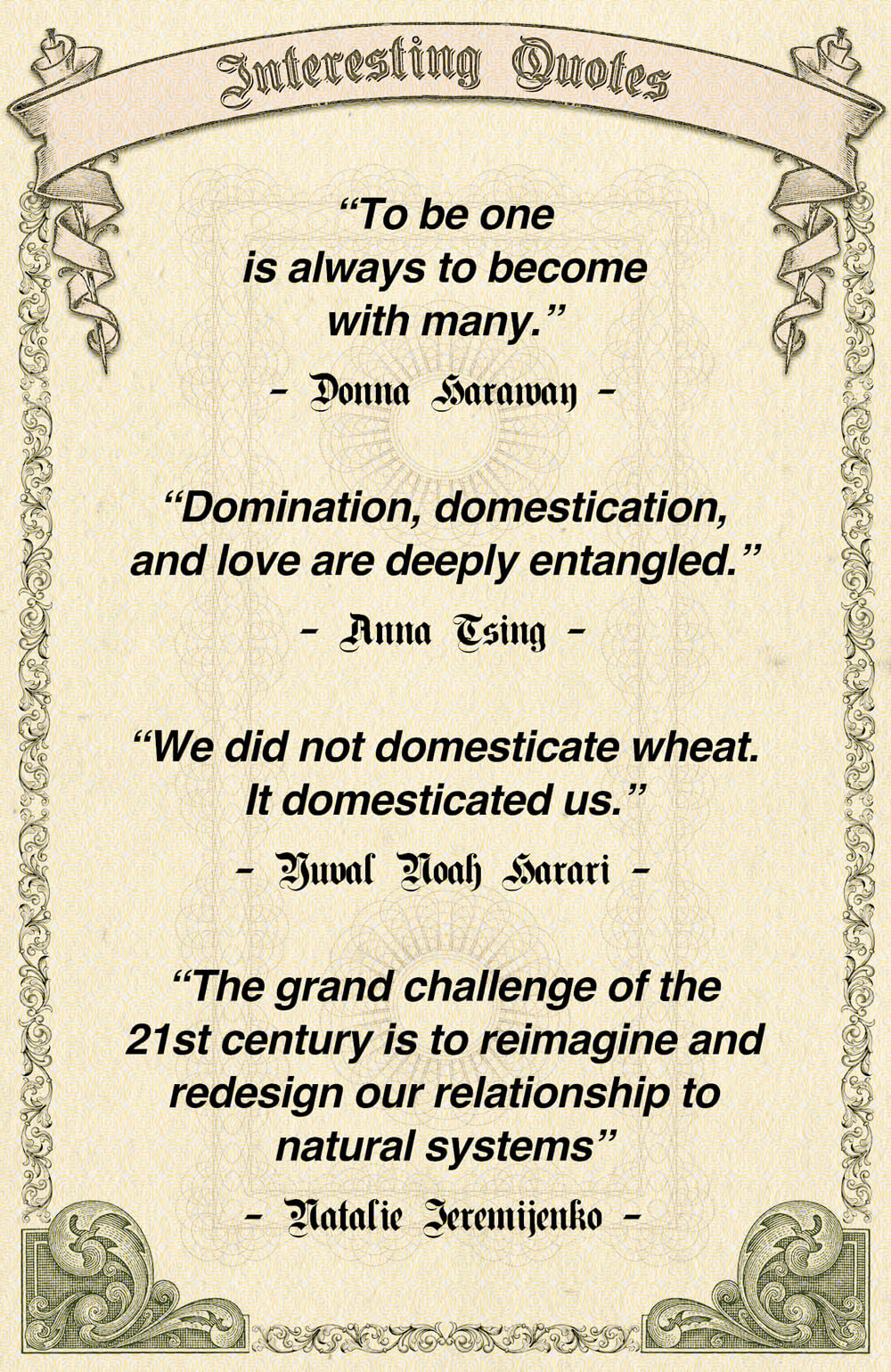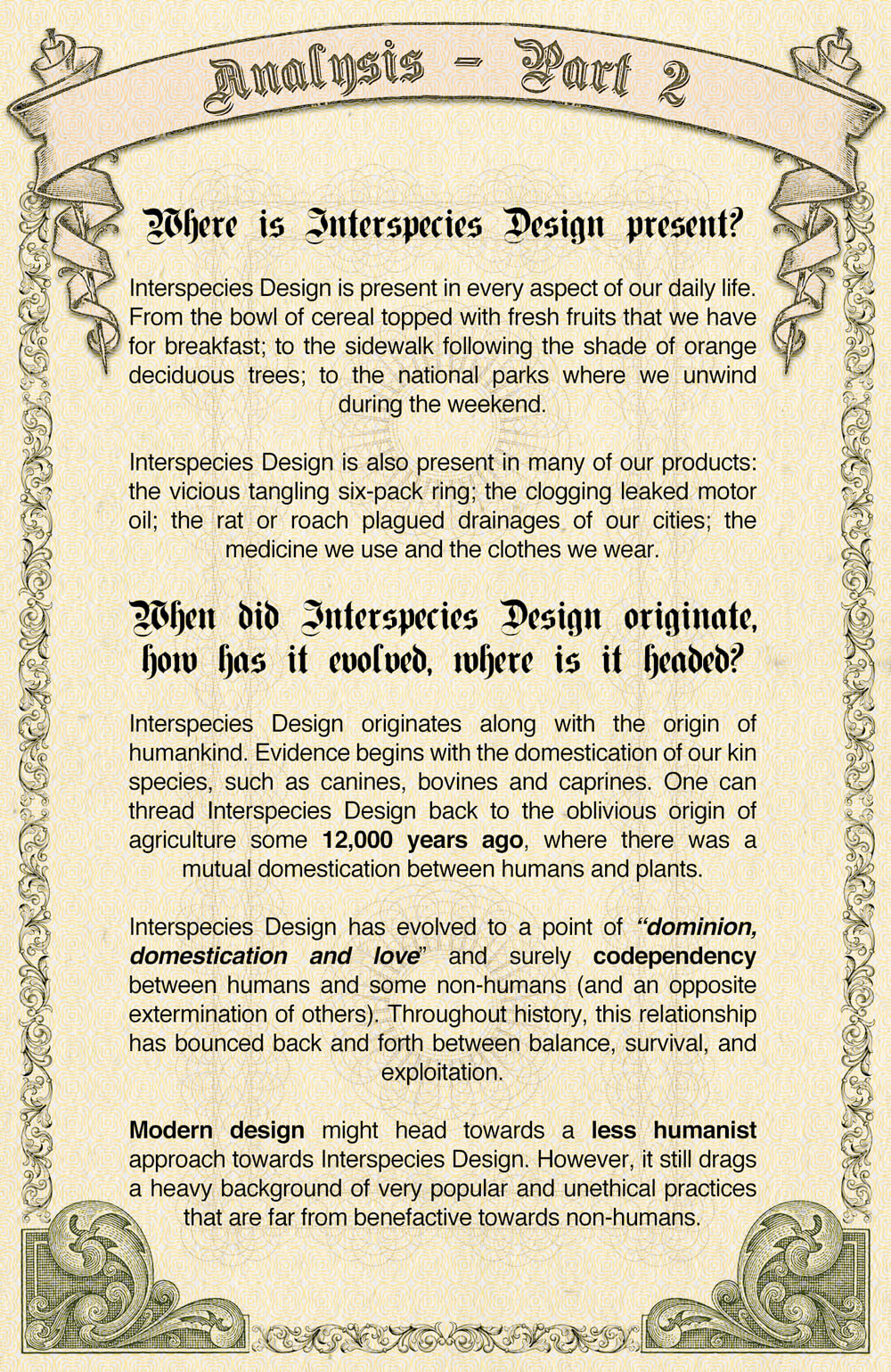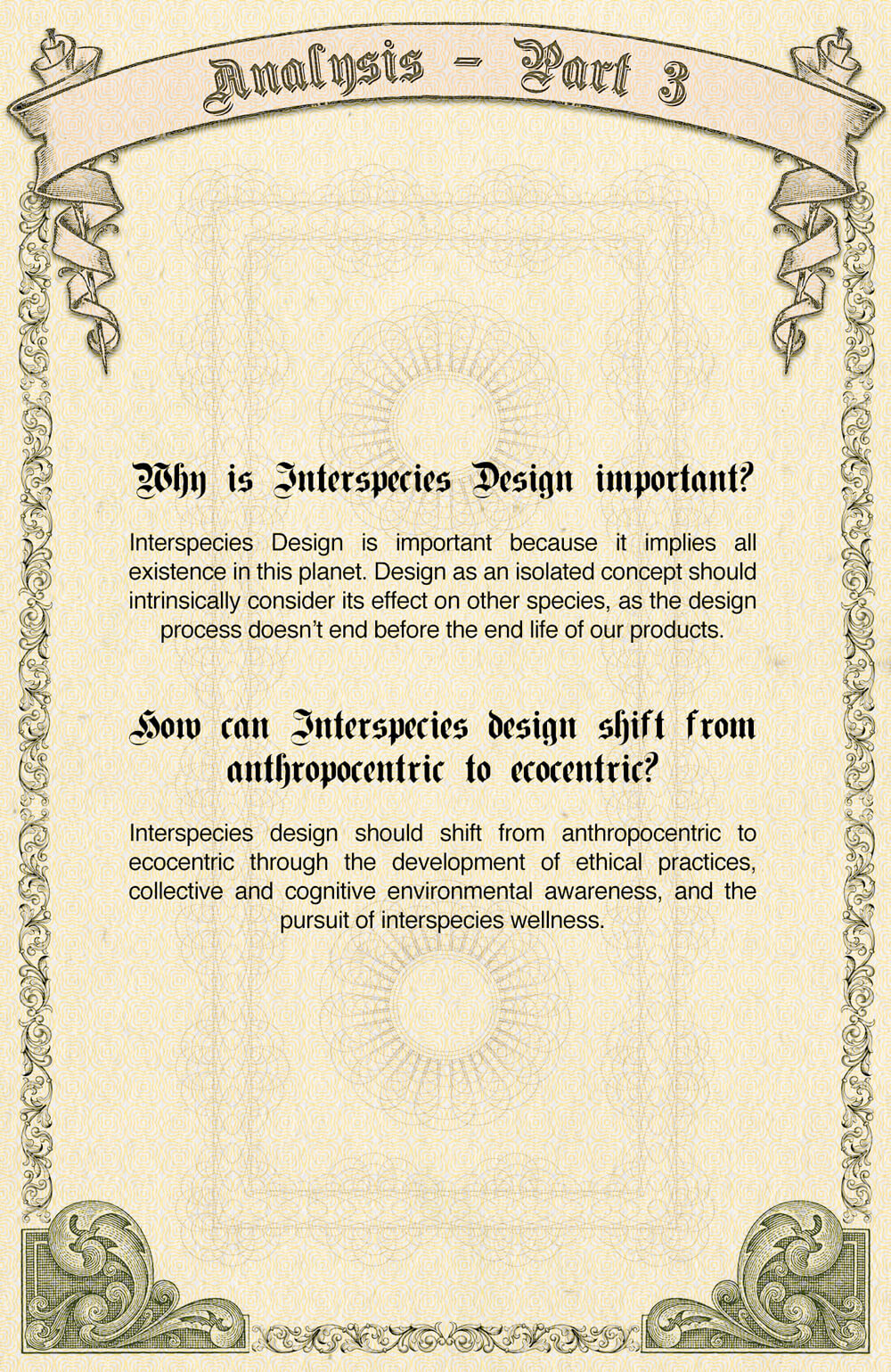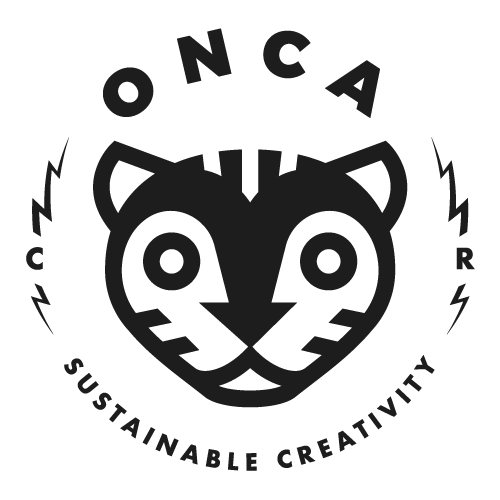What is Interspecies Design?
Inter (between) + species (animals or plants of similar biological characteristics) + design (how something is created or made).
Design that: uses, affects, models, controls, creates and / or develops (etc) a behavioral interaction, product or production system; which results and / or happens between two or more species.
This broad subject may often lay undermined. It is important to understand that anything that creates impact on the lives of humans and non-humans should be considered interspecies design.
Who plays roles in Interspecies Design?
Empirically, Interspecies Design is a humanist concept, hence mainly directed by humans. However it will always be affected and influenced by (or actually affect and influence) Nature as its counterpart. Nature in this case would be considered as every other living species on the planet.
This paradigm leads to two main diversions of Interspecies Design:
Anthropocentric Interspecies Design: focuses on humanity as the main axis and benefiter of the design, demonstrating little or no importance to the other creatures involved.
Ecocentric Interspecies Design: focuses on an equilibrated approach to design where all parts may benefit and proliferate.
Where is Interspecies Design present?
Interspecies Design is present in every aspect of our daily life. From the bowl of cereal topped with fresh fruits that we have for breakfast; to the sidewalk following the shade of orange deciduous trees; to the national parks where we unwind during the weekend.
Interspecies Design is also present in many of our products: the vicious tangling six-pack ring; the clogging leaked motor oil; the rat or roach plagued drainages of our cities; the medicine we use and the clothes we wear.
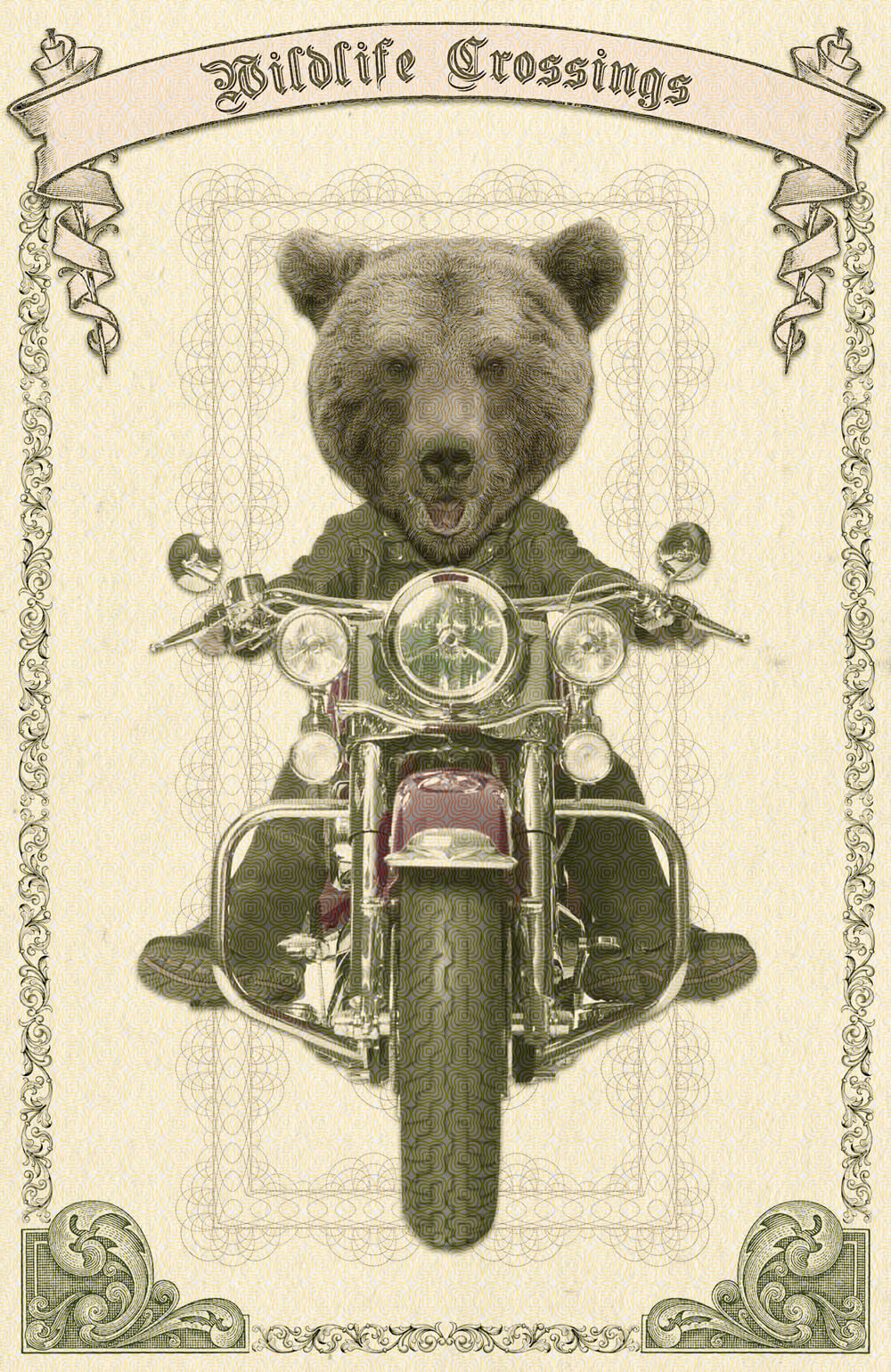
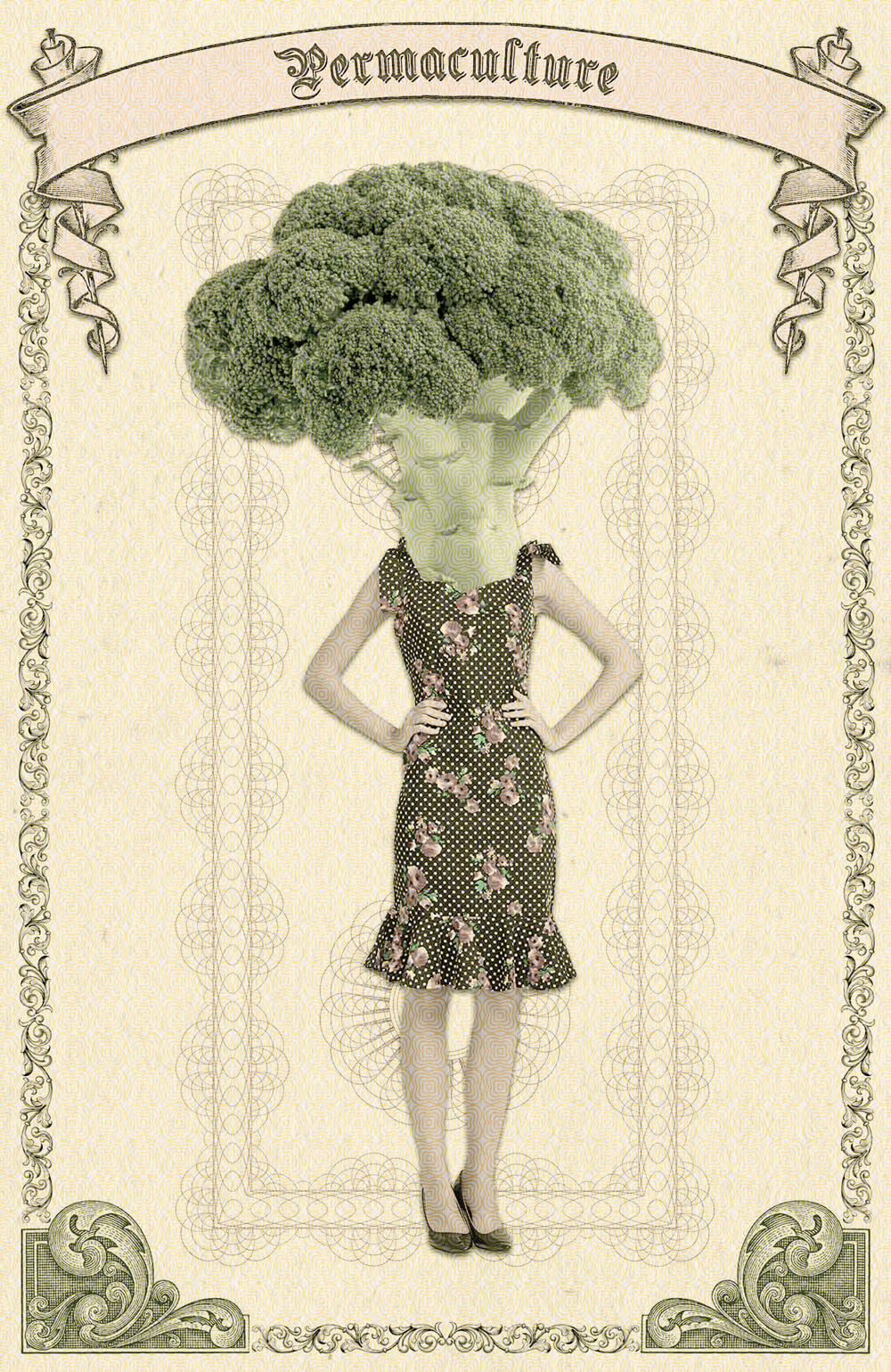
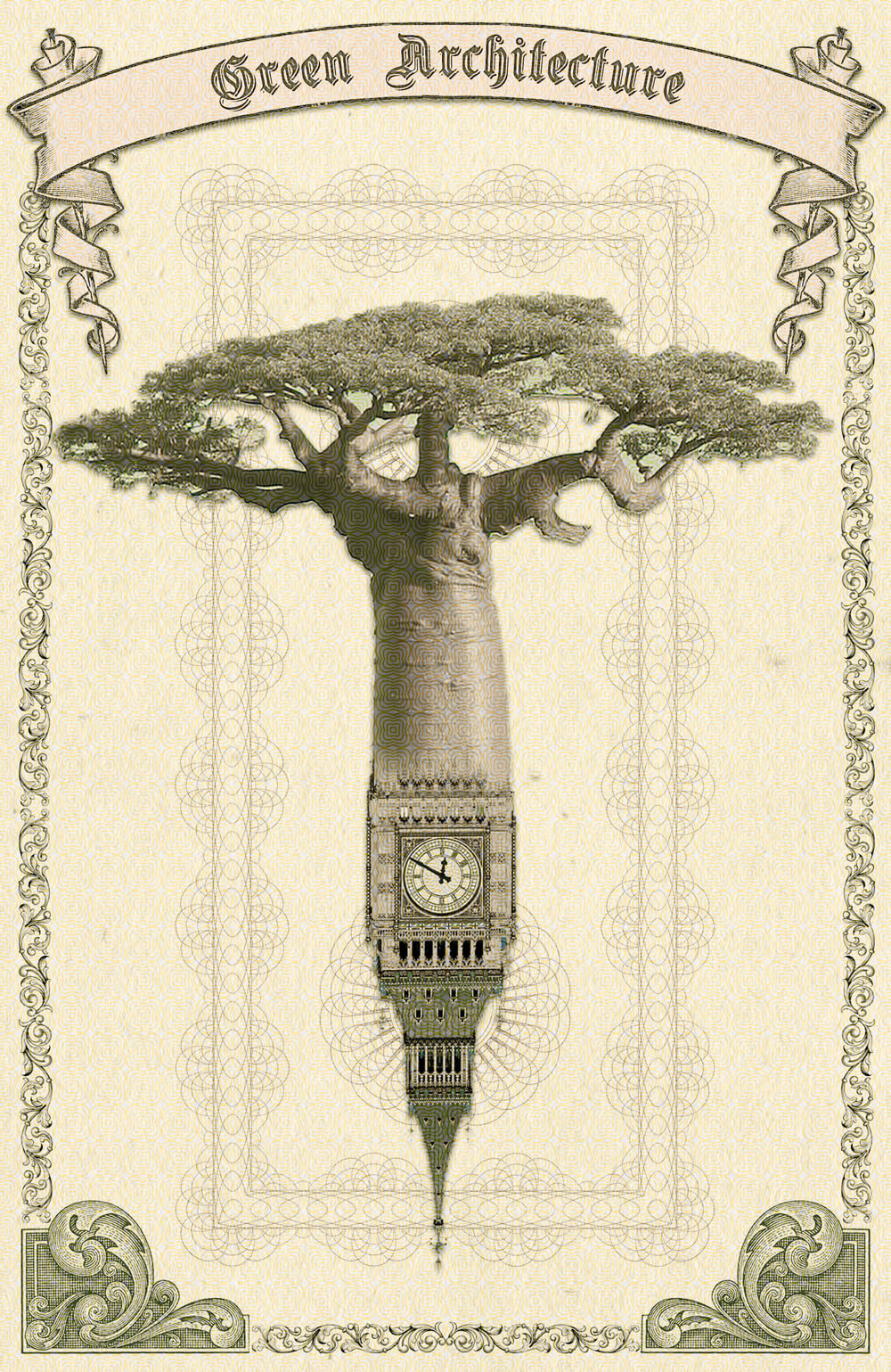
Ecocentrism
noun
UK /ˌek-oh-sen-triz-uhm,ee-koh
a philosophy or perspective that places intrinsic value on all living organisms and their natural environment, regardless of their perceived usefulness or importance to human beings.
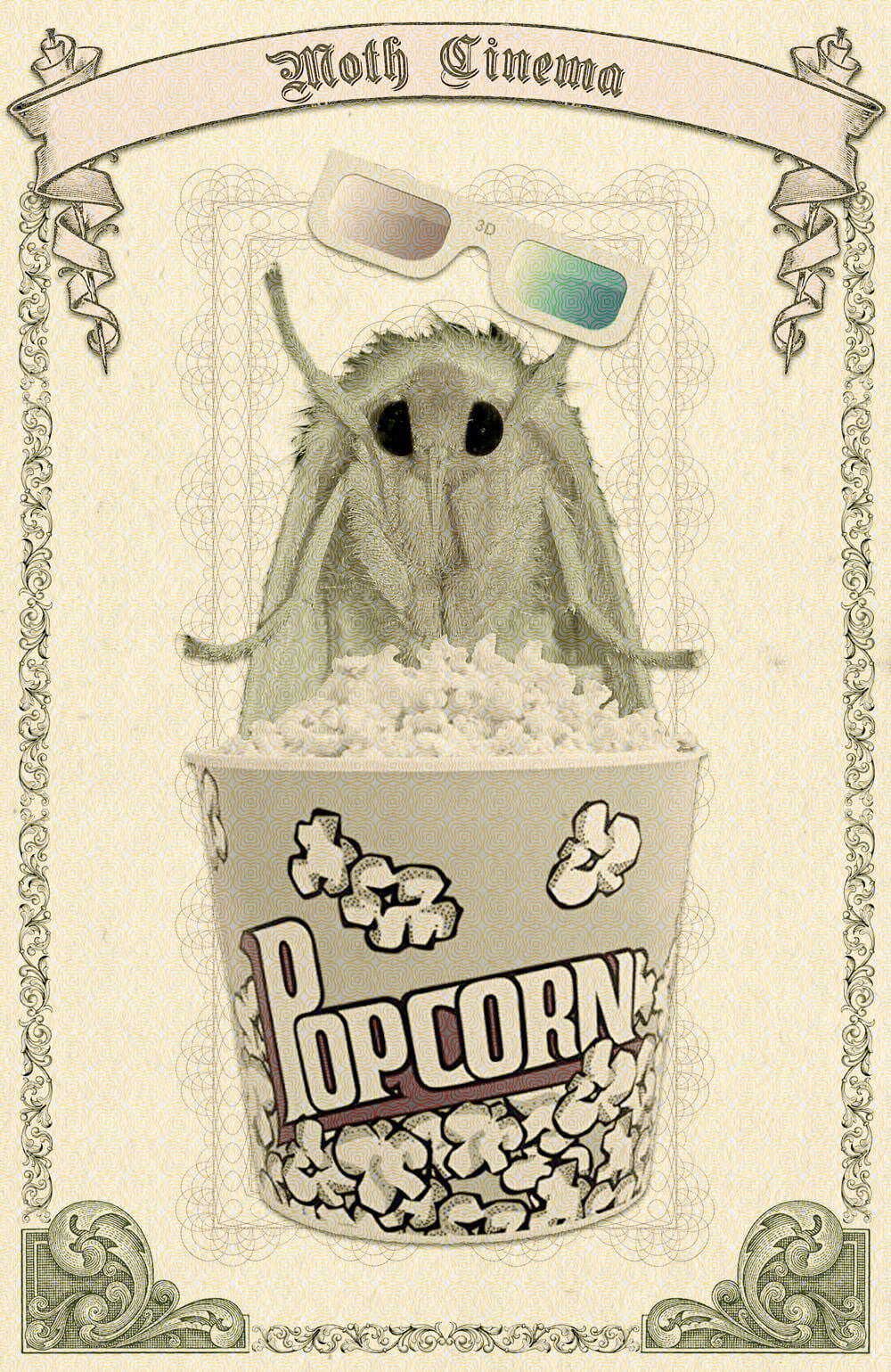
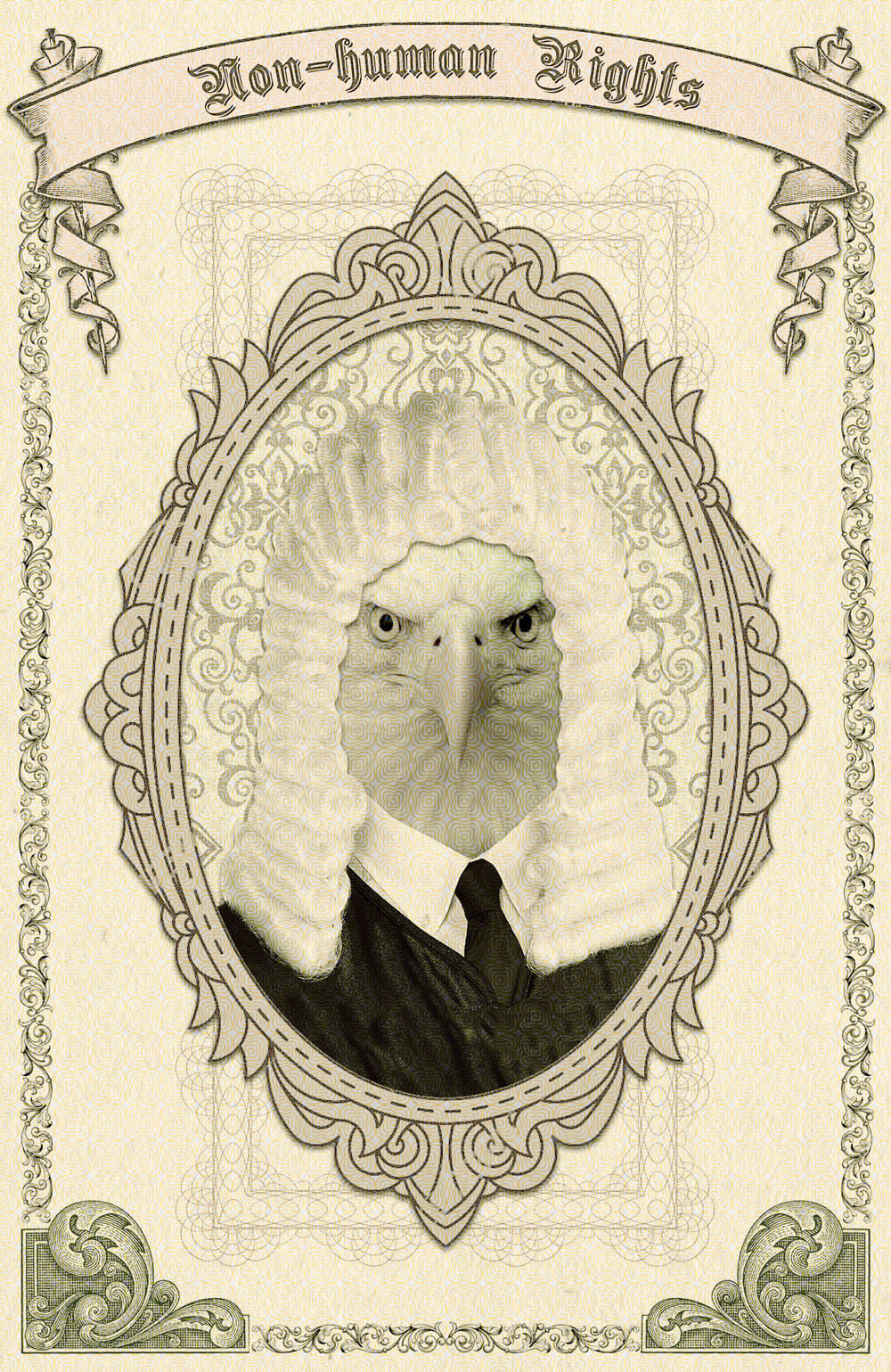

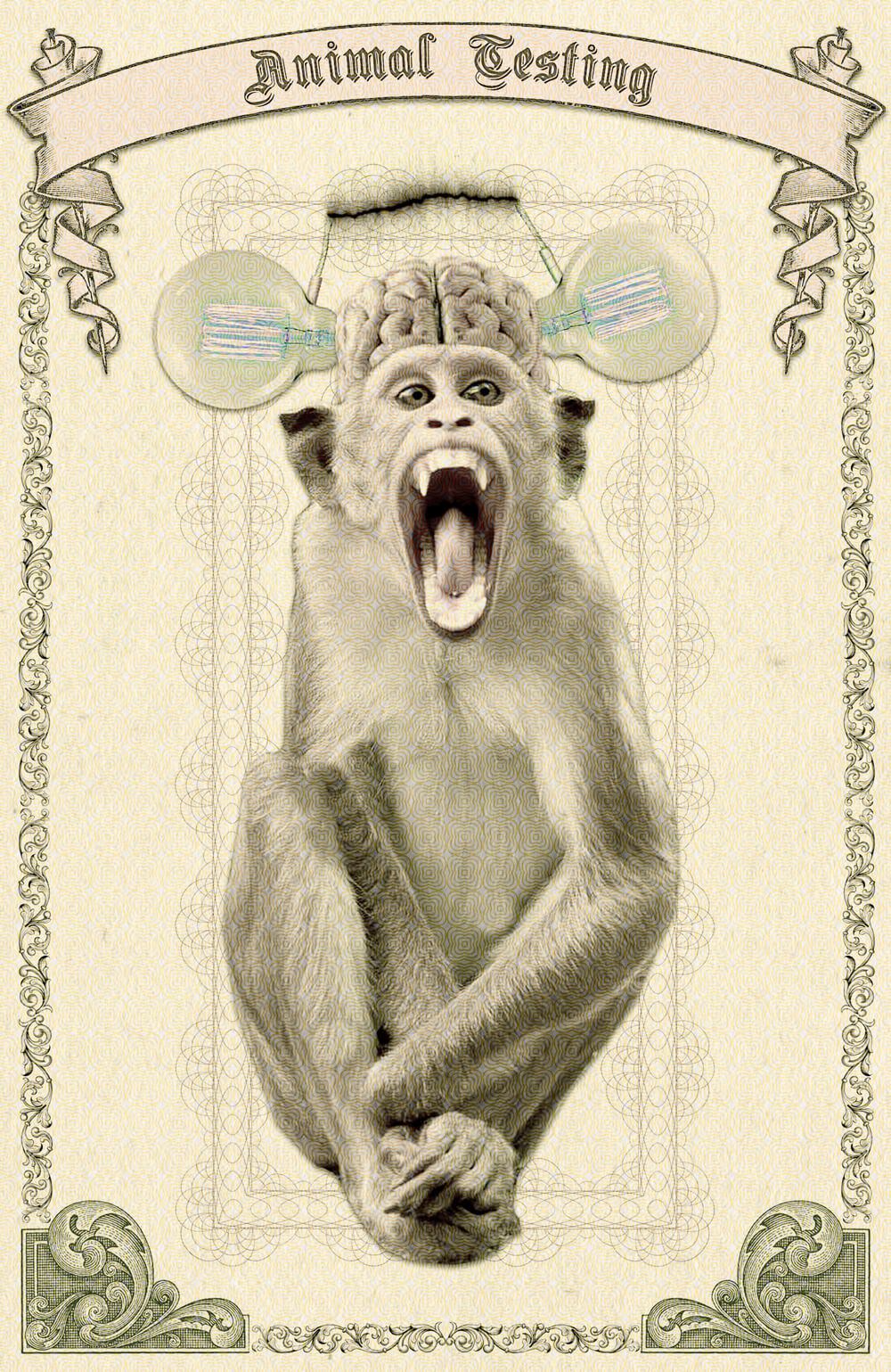
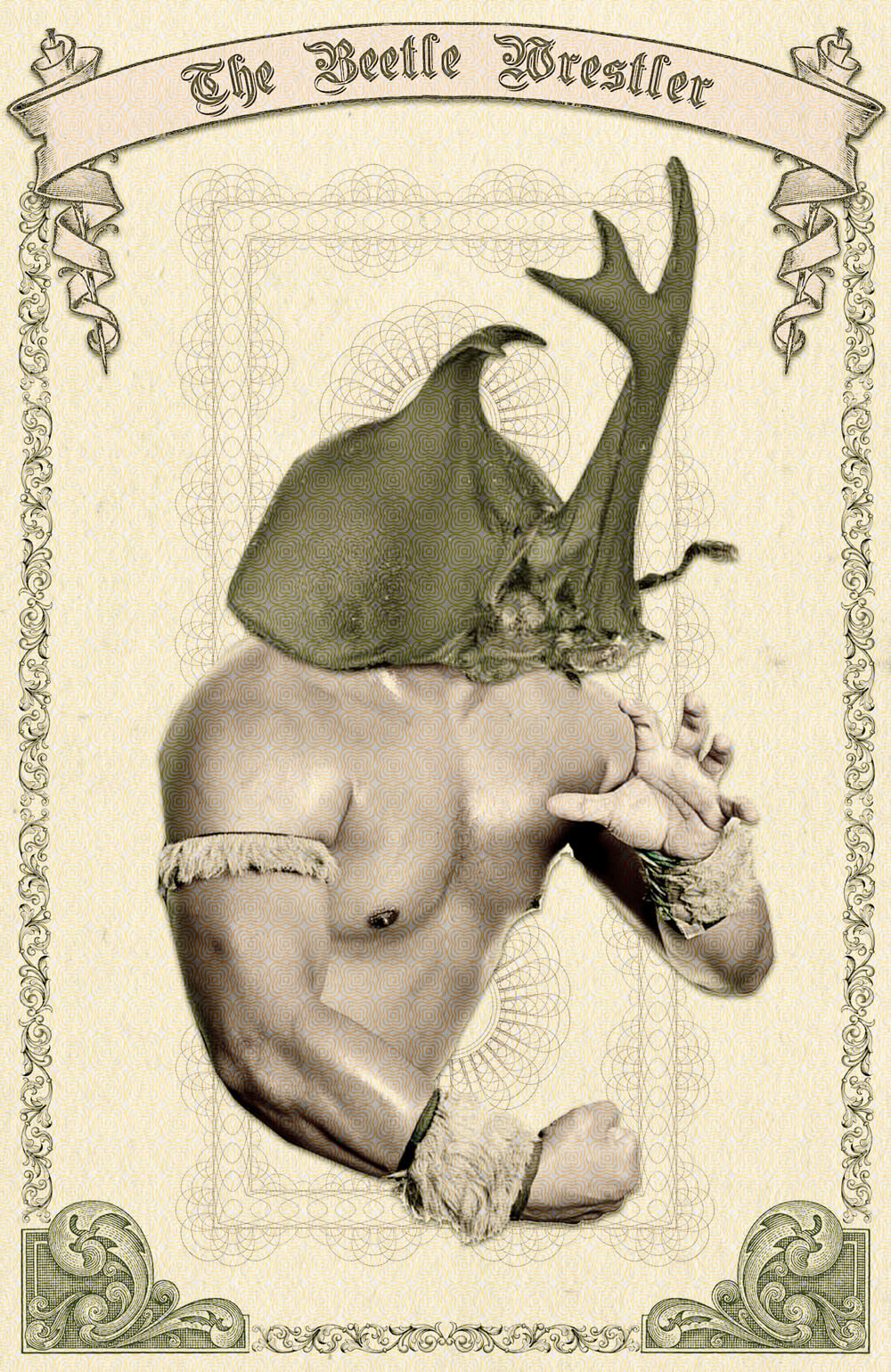

Anthropocentrism
noun
UK /ˌæn.θrə.pəˈsen.trɪ.zəm
a belief in humans and their existence as the most important and central fact in the universe
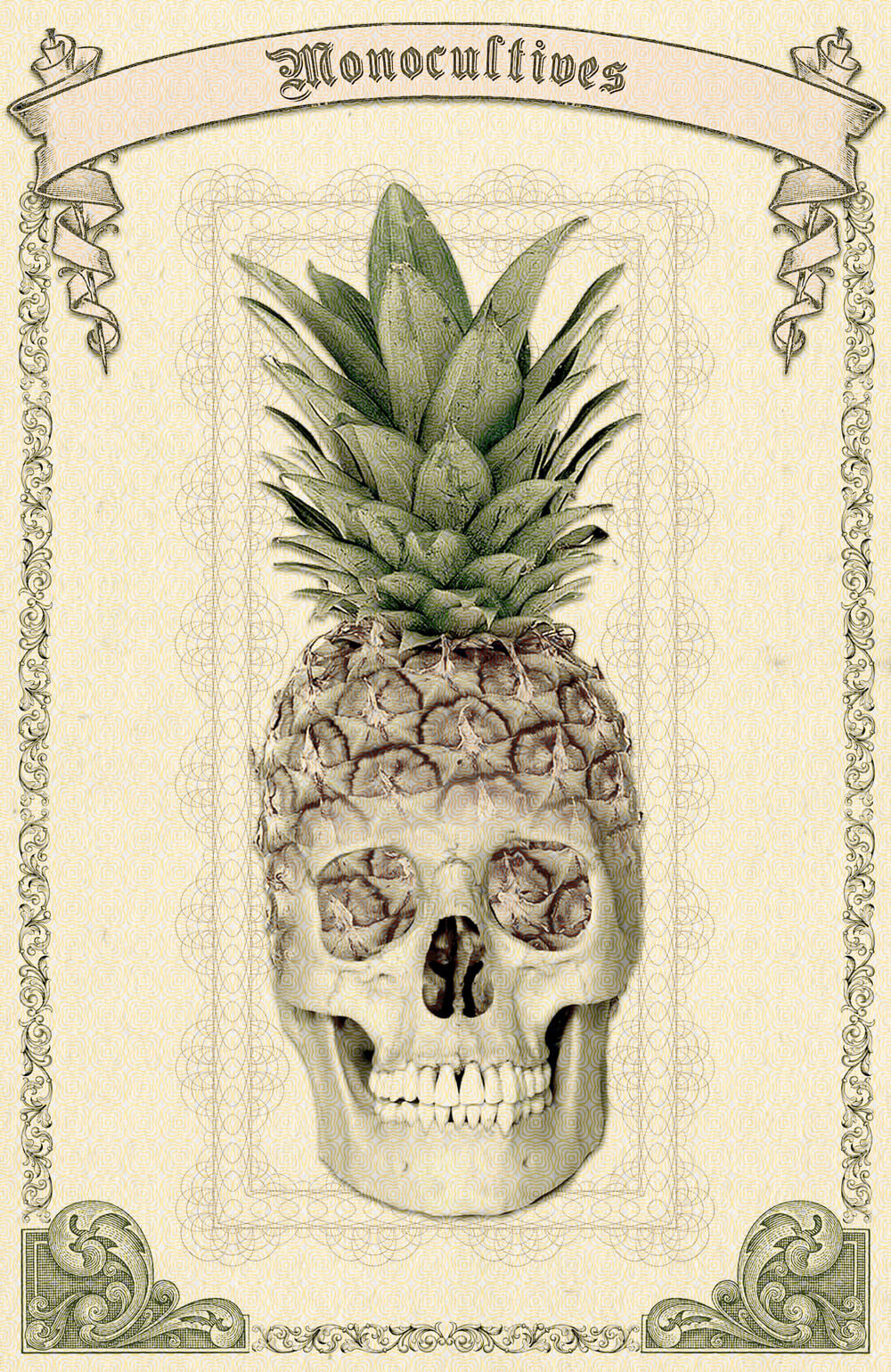

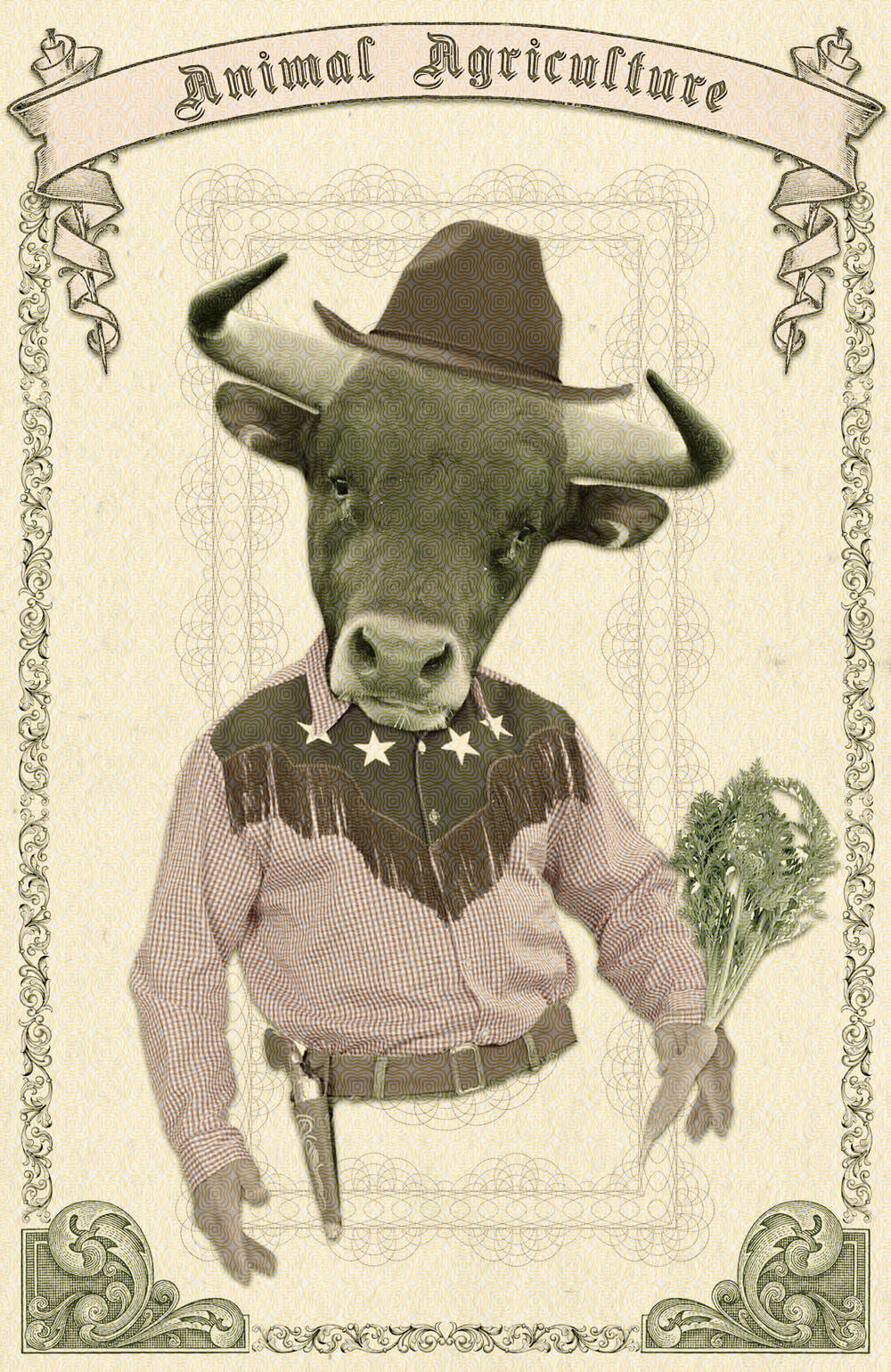
When did Interspecies Design originate, how has it evolved, where is it headed?
Interspecies Design originates along with the origin of humankind. Since the beginning of the domestication of our kin species, such as canines, bovines and caprine. One can thread Interspecies Design back to the oblivious and world wide origin of agriculture some 12,000 years ago, where it is safe to say that there was a mutual domestication between humans and plants such as corn, wheat and rice.
Interspecies Design has evolved to a point of “dominion, domestication and love” and surely great codependency between humans and some non-humans (and an opposite extermination of others). Throughout the history of mankind, this relationship has bounced back and forth between balance, survival, and exploitation.
Modern design might be heading towards a less humanist (and more ecocentric) approach towards Interspecies Design. However, it still drags a heavy background of very popular and unethical practices that are far from benefactive towards non-humans.
Why is Interspecies Design important?
Interspecies Design is important because it implies all existence in this planet. Design as an isolated concept should intrinsically consider its effect on other species, as the design process doesn’t end before the end life of our products.
How can Interspecies design shift from anthropocentric to ecocentric?
Interspecies design should shift from anthropocentric to ecocentric through the development of ethical practices, collective and cognitive environmental awareness, and the pursuit of interspecies wellness.
